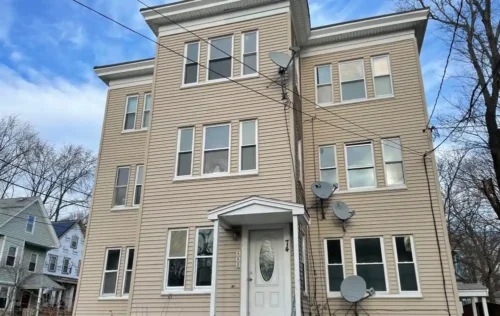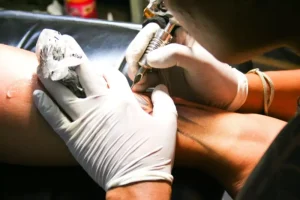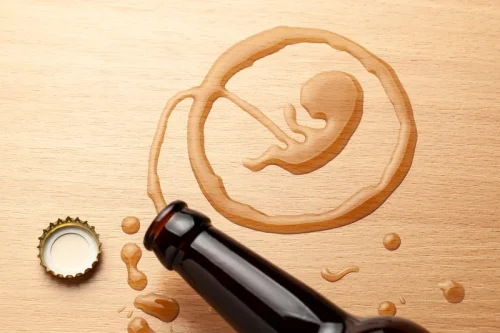With accountability, consistency, and encouragement, Refresh what is a recovery residence can help you to take control of your life and push you toward a promising future. If you’re interested in learning more about the Refresh Recovery Residence rules, contact us. At a Refresh Recovery Residence, you’ll find support in every area, so your attention can be squarely on getting sober and making a strong start in recovery. Background checks are performed on all potential residents to ensure none have a history of violence and sexual predators are excluded. RRA membership demonstrates trust and quality; all RRA members must meet the RRA Quality Standards to qualify for membership.
- The residents at the planned 24-bed residence would have rules, similar to the existing six-bed house, where alcohol or other substance use is prohibited.
- “Thousands of recovery residences exist in the Unites States that vary in size, organization, and targeted population,” according to the center’s proposal.
- “(David Lawrence Centers) continues to move forward with our proposal to develop a second recovery residence in Golden Gate, located less than a mile away from our main campus,” Scott Burgess, chief executive officer, said in a statement.
Golden Gate residents fighting 24-bed recovery residence. What to know
Resident wellness and opportunities to enhance recovery are at the forefront of the Standard. Recovery residences, sometimes known as sober living houses, have been shown to enhance a variety of recovery outcomes and are highly cost-effective, but little is known about which residence characteristics and practices are most important. The current study addressed this research gap by examining relationships between recovery residence characteristics (organizational, operational, programming) and residents’ recovery outcomes (substance use, criminal justice involvement, employment). Participant follow-up rates were 77% for the 6-month interview and 81% for the 12-month interview. Various racial and ethnic backgrounds were represented (47% white, 24% black, 10% other/mixed race,19% Latino/Hispanic). On average, participants were 39 years old and about one-third had at least some college education.
All About Recovery Residences
To serve higher needs/lower recovery capital populations, such as transition aged youth (e.g., youth years of age) with opioid use disorders, some Level II’s provide recovery support services and life skills development but at a lower intensity than Level III’s. All recovery residences offer alcohol and illicit substance-free living environments and utilize a social model recovery approach. They are differentiated by the intensity of staffing, governance, and recovery support services.
Let Our Experience Build You Up
Level III’s are required to be licensed in a few states, reflecting the therapeutic nature of the services provided. Our Board of Directors is composed of trailblazers in the recovery residence sector, bringing together a rich tapestry of expertise, compassion, and unwavering dedication. With decades of collective experience in shaping policies, enhancing community support, and pioneering innovative recovery solutions, they embody a shared vision of empowerment and transformative care. Sometimes also called a “recovery home” or “independent living,” sober living offers an opportunity for you to live independently in recovery with support from staff and house managers who have themselves recovered from drug or alcohol addiction and from peers who are in the same situation as you. This creates an environment of understanding and camaraderie—everyone striving toward a better future. The nonprofit mental health and substance abuse treatment center wants to build a 24-bed recovery residence on 62nd Street Southwest south of Golden Gate Parkway.
Secure housing is an important component of recovery, yet about 1/3rd of individuals entering addiction treatment report unstable living situations. Recovery residences offer a safe and supportive living environment and continuing care that can promote successful recovery outcomes. Although recovery residences do not typically offer structured activities or formal counseling, some operate according to established standards and guidelines that encourage resident participation in mutual help groups, enforce house rules, and promote resident accountability and communal learning. By providing affordable housing, peer support, and a resource rich neighborhood, recovery residences offer residents the opportunity to build financial, social, and community-based recovery capital.
You’ll find a safe, comfortable,
Level III / Type S (Supervised) delivers weekly, structured programming including peer-based and other recovery support services (e.g. recovery and resiliency groups or person-driven recovery plans) and life skills development programming (e.g., job readiness or budgeting). Staff are supervised, trained, or credentialed and are often graduates of a recovery residence. Level III’s are designed to support populations who need more intense support in developing recovery capital than provided by Level I or Level II.
- For instance, the American Medical Association says 53% of drug abusers have at least one co-occurring psychiatric illness that could include schizophrenia or bi-polar disorder.
- In addition to peer-based recovery support, recovery support services, and life skills development, Level IV’s offer clinical addiction treatment.
- Substance use outcomes were measured via self-reported abstinence in the past 6 months (i.e., abstinence from alcohol, abstinence from other drugs, and overall abstinence from all substances).
- The group experience within the home fosters a culture of recovery based on shared lived experience, support, and structure – this community-based approach is referred to as the Social Model and is the basis of the national Standard for recovery residences.
- The NARR Standard provides guidance for certifying effective recovery residences and incorporates the collaborative values of acute care and social models of recovery.
- Criminal justice involvement was defined as any self-reported arrest over the past 6 months and employment was derived from self-reported number of days worked over the same period of time.






